Search the Special Collections and Archives Portal
Search Results
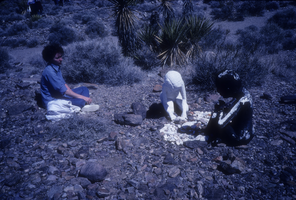
Unidentified protestors observing the “Shadow Children” sculpture demonstration at a Good Friday peace protest: photographic slide
Date
Archival Collection
Description
From the Sister Klaryta Antoszewska Photograph Collection (PH-00352).
Image
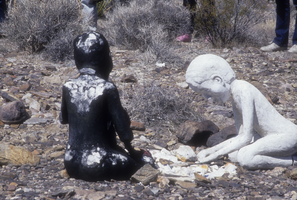
“Shadow Children” sculpture demonstration at a Good Friday peace protest: photographic slide
Date
Archival Collection
Description
From the Sister Klaryta Antoszewska Photograph Collection (PH-00352).
Image
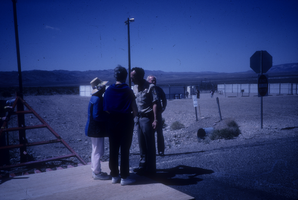
Sister Rosemary Lynch speaking to officer Jim Merlino on Good Friday at the Nevada Test Site: photographic slide
Date
Archival Collection
Description
From the Sister Klaryta Antoszewska Photograph Collection (PH-00352). Sister Rosemary Lynch (left, wearing a hat). Jim Merlino (second from right, in police uniform).
Image
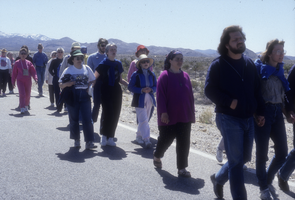
Sister Rosemary Lynch and unidentified protestors on Good Friday at the Nevada Test Site: photographic slide
Date
Archival Collection
Description
From the Sister Klaryta Antoszewska Photograph Collection (PH-00352). Way of Cross. Sister Rosemary Lynch (fourth from the right in a blue jacket and straw hat).
Image
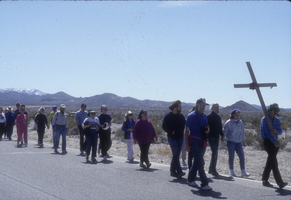
Sister Rosemary Lynch and unidentified protestors on Good Friday at the Nevada Test Site: photographic slide
Date
Archival Collection
Description
From the Sister Klaryta Antoszewska Photograph Collection (PH-00352). Way of Cross. Sister Rosemary Lynch (seventh from the right in a blue jacket and straw hat).
Image
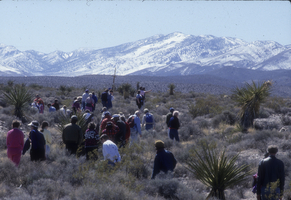
Protesters at the Way of the Cross event at the Nevada Test Site peace demonstration: photographic slide
Date
Archival Collection
Description
From the Sister Klaryta Antoszewska Photograph Collection (PH-00352). Good Friday. Protesters at Way of the Cross event which is also known as Stations of the Cross.
Image
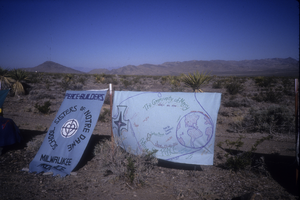
Colorful banners in the desert: photographic slide
Date
Archival Collection
Description
From the Sister Klaryta Antoszewska Photograph Collection (PH-00352). The banner on the left says, "PEACE-BUILDERS", "SCHOOL SISTERS OF NOTRE DAME", "MILWAUKEE [PROVIDENCE?]". The banner on the right says, "The Community of Mercy". The banner on the right shows a drawing of a globe and has other miscellaneous words all over the banner.
Image
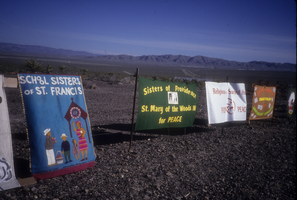
Multiple Banners in the desert: photographic slide
Date
Archival Collection
Description
From the Sister Klaryta Antoszewska Photograph Collection (PH-00352). Banners from left to right read, "SCHOOL SISTERS OF ST. FRANCIS", "Sisters of Providence St. Mary of the Woods, IN for PEACE". The last two banners are not fully legible.
Image
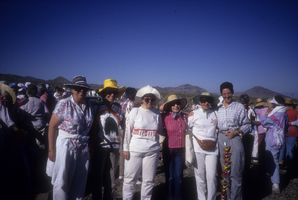
Group of people at the retreat: photographic slide
Date
Archival Collection
Description
From the Sister Klaryta Antoszewska Photograph Collection (PH-00352). Carol Carter, Marya, Joan, Rosemary Lynch, Klaryta Antoszewska, and Carol at the protest in the desert.
Image
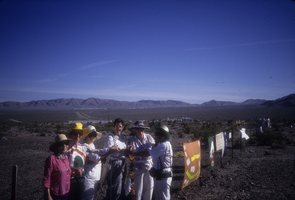
Group of people through the fence: photographic slide
Date
Archival Collection
Description
From the Sister Klaryta Antoszewska Photograph Collection (PH-00352). People in the group are Carol Carter, Marya, Joan, Rosemary Lynch, Klaryta Antoszewska, and Carol (not in order).
Image
